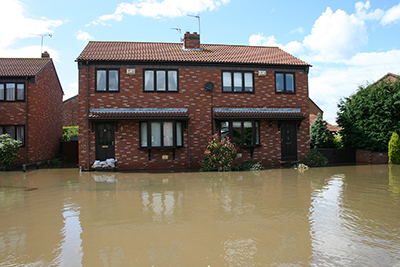
When it comes to flood damage and interior restoration, masonry and wood have significant differences.
As a concrete product, masonry is naturally more resilient to water damage from flooding. It doesn’t become a food source for mold and can be easily cleaned if mold does attach to it.
Wood, however, can be a hotspot for mold growth and moisture-related problems, which can undermine its structural integrity after a flood. Wood is also vulnerable to fire, decay, and termites, making it a less durable building material than concrete masonry units (CMUs).
Comparing the Costs
When comparing insurance and flood restoration costs for structures made from CMU and wood construction, several factors come into play. These include material durability, susceptibility to damage, and regional insurance rates. Although the specific costs vary by location, property type, insurance provider, and other variables, general trends stand out.
Insurance Costs
- Structures built with CMUs are durable, last for decades, and resist damage from floods, among other things. Because of this, insurance providers may consider structures with CMUs as a lower risk, potentially leading to lower insurance premiums compared to wood constructions.
- Wood structures are more susceptible to flood damage, fire damage and termite infestation and will require a significant amount of cleanup or reconstruction after a catastrophic event. As a result, properties constructed with wood often carry higher insurance premiums.
Restoration Costs
- CMU structures are highly resistant to damage. Restoration costs typically involve general cleaning and minor repairs such as filling cracks or repairing surface imperfections.
- Wood structures have a significant amount of damage from floods, including structural damage from moisture, mold and mildew and, pests. Restoration costs for wood structures can add up quickly and may require repairing or replacing damaged sections as well as general repairs of sanding, refinishing, and treating for pests or mold.
Check the Facts
For accurate insurance and restoration cost estimates, it’s essential to consult reputable industry publications, insurance providers, or construction professionals in your area. Additionally, regional building codes, regulations, and local market conditions can influence cost estimates.
Resources like the construction cost database RSMeans or reports from organizations such as the Insurance Information Institute can provide valuable data, though access to detailed information may require a subscription or purchase.
Be Ready for Flooding with CMUs
Nothing beats concrete masonry for building in flood-prone areas. The Southeast Concrete Masonry Association can provide all the information you need about the economic and safety advantages of CMUs and help with design and construction codes. Learn more about concrete masonry at our website.
